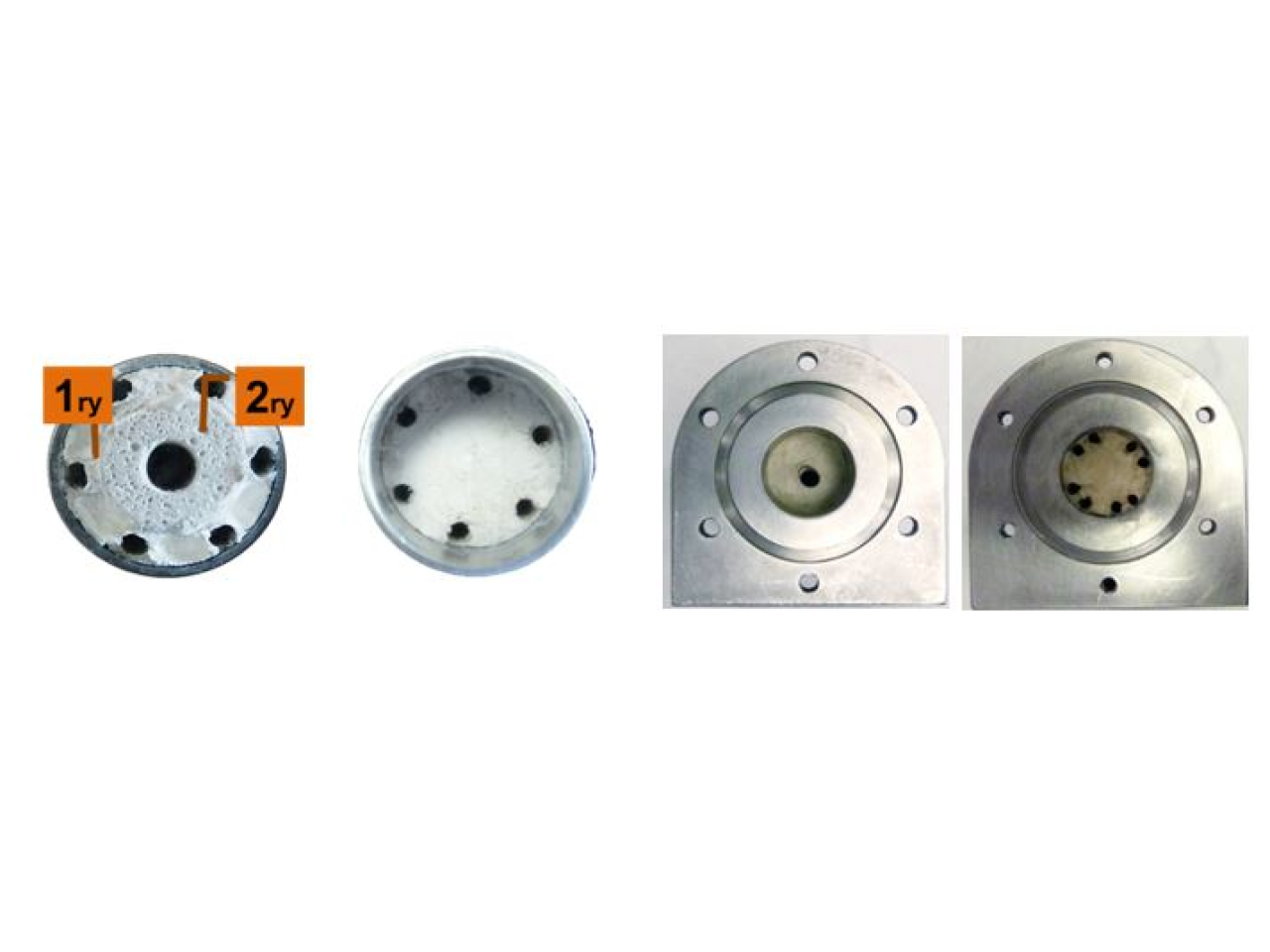Processes for the production of ceramic-based articles with controlled porosity in terms of volume, morphology, size, interconnection, 3D distribution. ISTEC manufactures ceramic or hybrid architectures with functional porosity (multidimensional from nano- to milli- metric, globular or unidirectional, isotropic - anisotropic, graded, etc.). The porosity is tailored for the specific application. Ceramic based materials with oxide or non-oxide nature were produced with functional porosity for applications such as components of heat exchangers, solar absorbers, carbon dioxide absorbers, lightweight composite panels for insulation and resistance to fire, bone substitutes, for underwater acoustic sensors etc.. Porous ceramics are of interest to the food industry because of their non-toxicity, durability and environmental sustainability.
The experience in the diversification of technologies for the control of the morphology and size and space distribution of porosity allows to design and realize various materials of different nature in relation to the application of interest. In fact ceramic materials of different nature have been produced with functional porosity for applications such as components of heat exchangers, solar absorbers (CNR Patent MI2012A000583), absorbers of carbon dioxide (CNR patent MI2012A002111), lightweight composite panels for insulation, fire resistance, etc. (CNR patent MI2014U000387).
The possibility to range between oxidic and non oxidic ceramics, ceramic-ceramic or hybrid composites , as well as the possibility of including phases of fibrous nature opens several potential areas of application. The technologies allow to diversify the products by means of the choice of the most suitable material in terms of ceramic composition and mechanical and thermal performance and to modulate the porosity in terms of pore's volume, dimensions, interconnection, directionality, etc. according to the requirements of the application. The porous structure can also be used as a templating agent or support for the realization of functionalized surfaces to obtain active surface layers in the decomposition, absorption, catalysis interface.
Heat pipe technology
The application concerns the heat pipe technology. A heat pipe is a device that can exchange large amounts of heat with a very small temperature difference between the hot and cold interfaces, by evaporation and condensation of a working fluid. The evaporator is the heart of the device and contains a capillary -porous structure (metal or polymer). A Loop Heat Pipe (LHP ) consists of an evaporator (capillary pump), a compensation chamber, a condenser and vapor and liquid lines. ISTEC realized a LHP evaporator containing two concentric geopolymer (alkali aluminosilicate ) wicks with different porosity. The high capillary force is created thanks to the very fine porosity of the primary wick, while the innermost secondary wick characterized by large pores, physically connects the evaporator to the compensation chamber to feed the primary wick with the liquid. The final device was tested by SAB with acetone as working fluid getting promising results in terms of heat exchange capability.
SAB Aerospace srl, CGS Spa
The material was developed as part of industrial research contracts related to the project PON01_00375 " PANDION - Study of innovative Space - functional subsystems "
 Front side ( with indicated the primary and secondary wick ) and rear of the LHP, liquid line side
Front side ( with indicated the primary and secondary wick ) and rear of the LHP, liquid line side

